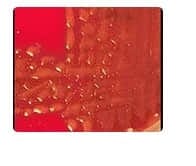Exam Details
Exam Code
:ASCP-MLTExam Name
:MEDICAL LABORATORY TECHNICIAN - MLT(ASCP)Certification
:ASCP CertificationsVendor
:ASCPTotal Questions
:572 Q&AsLast Updated
:Apr 15, 2025
ASCP ASCP Certifications ASCP-MLT Questions & Answers
-
Question 311:
The activities conducted in a laboratory with a certificate of waiver include:
A. tests that are simple to perform and have an insignificant risk for error
B. moderate- or high-complexity lab testing until the lab is determined by survey to be in compliance
C. high complexity tests only
D. physicians to perform microscopy only
-
Question 312:
The results demonstrate compliance with diet and medication. A HbA1C result that is <7.0% indicates glycemic control for most adults with diabetes.
Chemistry
A HbA1C result for a diabetic patient is 6.0%. What conclusion can be made regarding this patient's carbohydrate management?
A. The results are inconclusive and should be repeated with a different method.
B. The patient is probably not following dietary recommendations.
C. The patient is compliant with diet and medication.
-
Question 313:
Assuming an alpha hemolytic reaction (not well seen in the image), viridans streptococcus and S. pneumoniae are the two possible responses. However, these colonies are far too mucoid for viridans streptococci; therefore, S. pneumoniae is
the most likely choice. Also, the colonies are much too large and the hemolytic reaction is wrong for S. pyogenes or S.
agalactiae.
A patient was admitted to the hospital recently with an obvious infection. A sputum specimen was submitted and the microbiologist inoculated it to sheep blood agar. Based on the colony morphology and the alpha hemolysis seen in the image
to the right, the most likely identification is:

A. Streptococcus pneumoniae
B. viridans streptococcus
C. Streptococcus pyogenes
D. Streptococcus agalactiae
-
Question 314:
PCT usually rises within 3-6 hours of infection. CRP also increases rapidly following infection, but is not as specific for infection as PCT. A rise in CRP could also occur with SIRS. Lactic acid is usually used to detect and monitor impaired
circulation and tissue oxygenation in critically ill patients.
Chemistry
Of the three laboratory tests that are listed, which has proven to be most effective for early differentiation of systemic inflammatory response syndrome (SIRS) from sepsis due to its increase following infection and higher specificity?
A. C-reactive protein (CRP)
B. Procalcitonin (PCT)
C. Lactic acid
-
Question 315:
P. vivax characteristically displays Schuffner's dots and often enlarged RBCs along with brownish granules. P. vivax can also have 12-24 merozoies in each cell, actually filling the entire RBC. This parasite also has very irreglar shapes often referred to as "Ameboid".
P. falciparum and P. malariae do not display Shuffner's dots, therefore could not be the correct choice.
P. ovale does display Shuffner's dots in all stages, but characteristically has about 8-12 merozoites in rosettes or irregular clusters inside the RBC. Also, P. ovale characteristically shows enlarged, ovoid RBCs with fimbriated edges. Identify the parasite of a patient with suspected malaria who demonstrates the following findings on a blood smear:
-Enlarged RBCs, some with fine brownish granules
-> 15 parasites in some cells
-Ameboid structures
-
Schuffner's dots
A.
Plasmodium falciparum
B.
Plasmodium ovale
C.
Plasmodium vivax
D.
Plasmodium malariae
-
Question 316:
Secondary granules, also known as specific granules first appear in the myelocyte stage next to the nucleus. In neutrophils this is termed the "dawn of neutrophilia". What is one of the main characteristics of secondary granules in the neutrophilic granulocyte cytoplasm?
A. Appear first at the myelocyte stage
B. Dissolve in mature granulocytes
C. Are formed on the mitochondria
D. Are derived from azurophil (primary) granules
-
Question 317:
Listeria are non-capsulated, non-acid-fast, ?hemolytic, gram-positive bacilli that have a characteristic tumbling motility. They are found primarily in the environment and in the human GI tract. Since L. monocytogenes multiplies intracellularly, control of listeriosis requires cell-mediated immunity; thus, immunocompromised patients (such as newborns) are at high risk.
Which bacterial species is a common agent of neonatal bacteremia?
A. Streptococcus pyogenes
B. Listeria monocytogenes
C. Staphylococcus aureus
D. Enterococcus faecium
-
Question 318:
The purpose of protective isolation is to protect:
A. the phlebotomist from infection
B. the phlebotomist after a needlestick
C. the patient from family conflicts
D. a compromised patient from infection
-
Question 319:
IgE levels are often increased in patients with allergic disease. IgE binds to the membranes of mast cells and basophils, and if specific antigen is present to react with the IgE molecule, degranulation of these cells occurs, releasing histamines, and other substances into the blood or tissues.
Which of the following immunoglobulin classes is chiefly responsible for the degranulation of mast cells and basophils:
A. IgG
B. IgA
C. IgM
D. IgE
-
Question 320:
The risk of HbS polymerization is enhanced by a low (acid) pH, a state of dehydration, and increased levels of 2,3-DPG. Increased temperature (above 37°C) also adds to the risk.
Hematology
Which group of conditions INCREASES the risk of HbS polymerization?
A. Acid pH, dehydration, decreased level of 2,3-DPG
B. Alkaline pH, dehydration, increased level of 2,3-DPG
C. Acid pH,dehydration, increased level of 2,3-DPG
D. Alkaline pH,dehydration, decreased level of 2,3-DPG
Related Exams:
Tips on How to Prepare for the Exams
Nowadays, the certification exams become more and more important and required by more and more enterprises when applying for a job. But how to prepare for the exam effectively? How to prepare for the exam in a short time with less efforts? How to get a ideal result and how to find the most reliable resources? Here on Vcedump.com, you will find all the answers. Vcedump.com provide not only ASCP exam questions, answers and explanations but also complete assistance on your exam preparation and certification application. If you are confused on your ASCP-MLT exam preparations and ASCP certification application, do not hesitate to visit our Vcedump.com to find your solutions here.